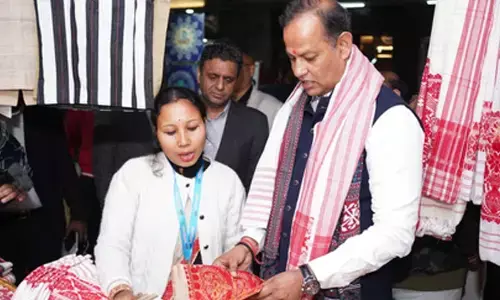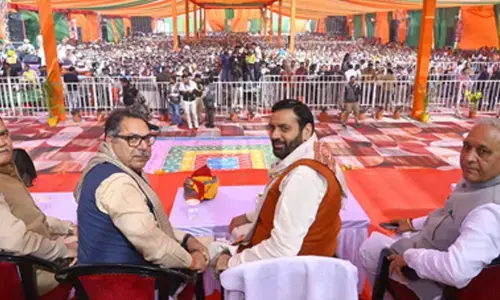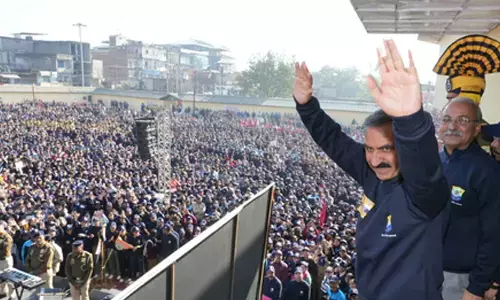Print media is here to stay: RNI Chief SM Khan

The print media in India, newspapers in particular, will continue to thrive for the next 10 to 15 years,” says SM Khan, Chief of Registrar of Newspapers of India (RNI).
The print media in India, newspapers in particular, will continue to thrive for the next 10 to 15 years,” says SM Khan, Chief of Registrar of Newspapers of India (RNI).
Khan was in the city recently on a special visit to the Chief Editor of the Urdu daily ‘Rahnuma-e-Deccan’, Syed Vicaruddin during which he was felicitated as well.
On the sidelines of his visit, he spoke to The Hans India about the ruling power of print media and the growing impact of new media. Shrugging off concerns over the impact of new media on print industry, Khan says, “We have recorded a 5.8 per cent growth in registrations over last year. I think that indicates that the print is unshaken by the developments in social (or new) media.”
He also thinks, “People are still interested in print media and they want to see the news in print. India has a future for print (industry). There are over one lakh registered newspapers and it’s growing every day. We are receiving nearly 100 new applications every day. The growth in vernacular newspapers is tremendous.”
Khan opines that in a stark contrast to the West, where print media is declining, there is formidable enthusiasm among Indians in registering a publication. “The RNI is issuing approximately 300 to 350 certificates of registrations every month,” he informs.
Since, the registration process takes at least three to four months to complete, the number of registrations cannot be directly correlated with the number of applications received, nor does it signify the ratio of those rejected or deferred due to incomplete.
Seemingly, the RNI which has completed 60 years on July 1 this year has two agendas, the first being to digitize all its services. “We are planning to make all services online,” he says. Currently, the RNI has made title applications and annual statements online. “The next step is to make more services online,” says Khan.
Eliminating dormant titles
The second but parallel agenda is to counterfeit bogus and incompetent publications by deregistering their titles from RNI. “The RNI currently cannot deregister the titles and is contemplating such decisive action by means of a Parliamentary Act,” which according to the RNI Chief, “is due to be passed in the Parliament of India shortly.”
As obvious as it may seem, with over 100 new applications for title registrations received every day, the RNI, which already has nearly 1.5 lakh registered titles, is running out of new titles to be allotted to applicants.
According to Khan, only about 25,000 publications regularly submit their annual statement. The Act, if approved by Parliament will allow a large number of papers that are not functional to be deregistered, if the publication fails to submit the annual statement for three consecutive years.
“The deregistration of dormant publications may make the same title available to a potential applicant thus partially solving the issue of dearth of titles, an issue RNI encountered with earlier this year,” says Khan.
















